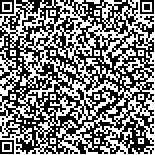| 引用本文: | 楼彤,白秀琴,贺小燕,杨膺,杨宗澄,袁成清.抗菌肽在海洋防污领域的研究进展*[J].中国表面工程,2022,35(2):1~11 |
| LOU Tong,BAI Xiuqin,HE Xiaoyan,YANG Ying,YANG Zongcheng,YUAN Chengqing.Research Progress of Antimicrobial Peptides in the Field of Marine Antifouling[J].China Surface Engineering,2022,35(2):1~11 |
|
| 本文已被:浏览 1552次 下载 672次 |

码上扫一扫! |
|
|
| 抗菌肽在海洋防污领域的研究进展* |
|
楼彤1,2, 白秀琴1,2, 贺小燕1,2, 杨膺3, 杨宗澄1,2, 袁成清1,2
|
|
1.武汉理工大学国家水运安全工程技术研究中心可靠性与新能源研究所 武汉 430063;2.武汉理工大学交通与物流工程学院 武汉 430063;3.英国基尔大学制药与生物工程学院 斯塔福德郡 ST5 5BG 英国
|
|
| 摘要: |
| 海洋生物污损仍是目前急需解决的难题,利用抗菌肽对基体进行改性获得防污效果是一种有效的绿色应对策略,然而目前缺少抗菌肽在海洋防污领域应用的全面报道。基于抗菌肽的二级结构,在详细介绍 α-螺旋结构、β-折叠结构和延伸/弹性结构三类不同结构抗菌肽的基础上,总结抗菌肽引发的膜损伤以及非膜损伤的多种抗菌机理,明晰抗菌肽的作用靶点:细胞膜、酶、蛋白质和核酸;阐述几种目前常见的基体表面接枝抗菌肽的方法;基于常见的海洋细菌、硅藻和大型污损生物繁殖体等典型海洋污损生物,对抗菌肽的防污特性进行分析。最后提出抗菌肽的制备、表面接枝方法,以及构效关系是其在海洋防污领域应用所面临的难题与未来发展方向,填补了抗菌肽防污技术领域目前缺少此类综述的空白。 |
| 关键词: 生物污损 抗菌肽 抗菌机理 接枝方法 防污性能 |
| DOI:10.11933/j.issn.1007-9289.20210611001 |
| 分类号:U661 |
| 基金项目:国家自然科学基金资助项目(52071246) |
|
| Research Progress of Antimicrobial Peptides in the Field of Marine Antifouling |
|
LOU Tong1,2, BAI Xiuqin1,2, HE Xiaoyan1,2, YANG Ying3, YANG Zongcheng1,2, YUAN Chengqing1,2
|
|
1.Reliability Engineering and New Energy Institute, National Engineering Research Center forWater Transport Safety, Wuhan University of Technology, Wuhan 430063 , China;2.School of Transportation and Logistics Engineering, Wuhan University of Technology,Wuhan 430063 , China;3.School of Phamacy and Bioengineering, Keele University, Staffordshire, ST5 5BG, UK
|
| Abstract: |
| Marine biofouling is still a problem that needs to be urgently solved. However, comprehensive studies and reports on the research progress of antimicrobial peptides in the field of marine antifouling remain scant. Three types of antimicrobial peptides with different secondary structures, α-helix structure, β-sheet structure and extended structure, are introduced. The antimicrobial mechanisms of membrane damage and non-membrane damage caused by antimicrobial peptides are summarized, and the targets of antimicrobial peptides on bacteria are pointed out: cell membrane, enzyme, protein and nucleic acid. Several methods of grafting antimicrobial peptides on substrate surface are described. Based on typical marine fouling organisms, such as bacteria, diatom and propagules of macrofouling organism, the antifouling properties of antimicrobial peptides are analyzed. It is proposed that the source of antimicrobial peptides, surface grafting methods and structure-functional relationship of antimicrobial peptides are the key problems and future development directions for their application in the field of marine antifouling. This paper fills in the comprehensive report on antifouling technology of antimicrobial peptides and provides ideas for other researchers in the field. |
| Key words: biofouling antimicrobial peptides antimicrobial mechanism grafting methods antifouling properties |

